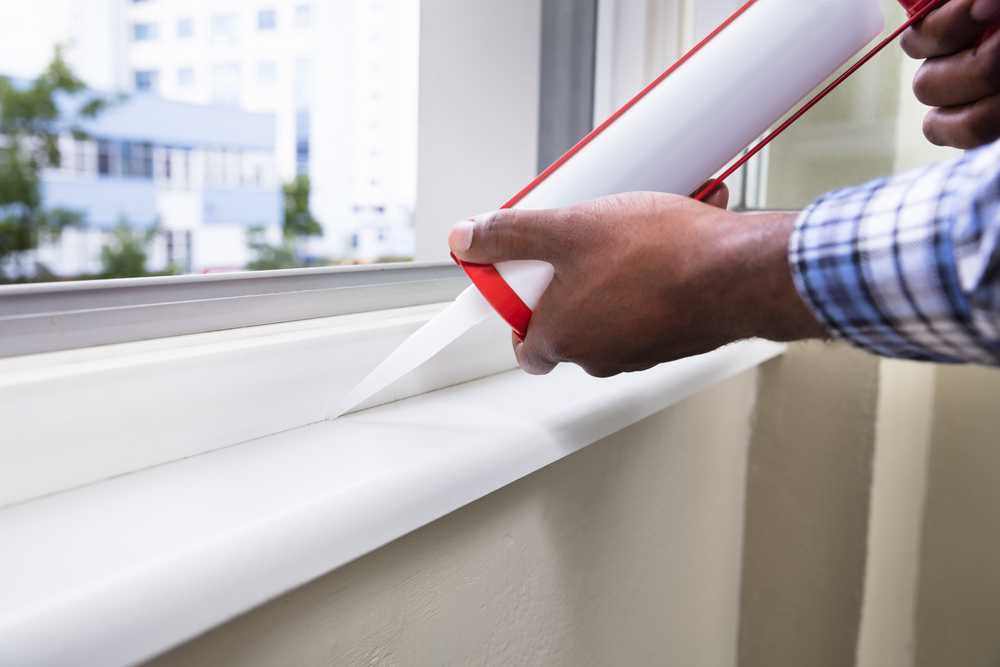Being without a heat source during a power outage is frustrating enough, but it can be especially uncomfortable or dangerous for those living in cold climates. There are, however, alternative heat sources you can use to keep your house warm. In this guide, we'll show you the best way to heat a house during a power outage with some ideas for alternative heat sources, including suggestions for non-electric heaters so you can purchase one as a precautionary measure in case the unexpected happens.
The Best Ways to Heat a House
Before we start, let's look at the best ways to keep your home warm when the power is on. This will help you retain as much heat as you can if the electricity in your house goes out. Being prepared will help give you a little peace of mind.
Close Off Rooms that You Don't Use
By closing off bedrooms and other rooms that aren't being used, you can prevent heat from escaping through these unused areas. Cold air is better able to get inside when doors are left open, so closing the doors to unused rooms helps keep drafts out of the rest of your home.
Open Your Curtains During the Day
When sunlight enters your house through curtains or windows, it helps warm the room naturally. If you don't already have them, consider installing blinds or curtains on your windows. If the power goes out after sunlight has been pouring in all day, closing the blinds or curtains (or both!) will act as a form of insulation, helping to keep the heat inside your home. Thermal curtains can help regulate the temperature and slow the escape of heat in the winter.
Use Fans to Circulate Warm Air Upward
If your home already has ceiling insulation, you may not need to install additional alternative heat sources for power outages. However, if you're concerned about how well insulated your ceilings are, using a ceiling fan in reverse during cold days and nights could provide some benefit. This alternative heating source works because warm air rises to the top of a room before being pushed down the walls, and eventually to the floor. This recycling of warmer air helps to steadily heat up a room over time. Running this ceiling fan heating method throughout winter can help keep your home warmer, providing you with more heat without using much energy.
Install Storm Windows
Storm windows act as alternative heat sources by helping to reduce air from flowing in and out of existing windows. This, in turn, helps to retain the indoor heat, which can be especially helpful during a power outage. As a bonus perk, because of their energy efficiency, storm windows even have the potential to help reduce your heating and cooling costs throughout the rest of the year.
Preparing Your Home for Winter
If the power went out in the whole house right now, would you and your home be prepared for an extended period? Here are some ways to prepare your house for cold weather months.
Insulate Your Windows

This isn't a common option people think of when considering alternative heat sources, but it can work well when done properly. Placing plastic wrap across windows can prevent cold air from entering by blocking any drafts. As long as you don't tear holes in the plastic film or leave the windows open during colder months, this solution can be a great alternative heat source, power outage or not.
You can also install other forms of window insulation, like foam or caulk to seal cracks and keep warm air from escaping.
Keep Your Water Heater Well-Maintained
Keeping your water heater well-maintained can help act as an alternative heat source during a power outage, and most water heaters should be able to keep stored water hot for an extended length of time.
Because of their frequent use over time, all home appliances tend to become less efficient after several years of operation. The best way to make sure that your water heater is up to the task is by performing regular maintenance at least once a year. This generally involves draining off the sediment that has built up inside over time, and then flushing out any scale or rust build-up using vinegar or another alternative cleaning agent.
Insulate Your Pipes
Consider insulating your water pipes in the house. Doing so can help keep you from having to deal with frozen pipes when the temps drop below 32 degrees Fahrenheit.
Insulating your plumbing only takes a few minutes to complete with pipe insulation sleeves that you can get at any hardware store for very little cost. Installing these sleeves is also easy—just slip it around an exposed pipe and secure it with tape or a zip-tie. However, most pipe insulation sleeves fit so snuggly enough over pipes that you won't need to secure it.
Even with insulated pipes, however, it's still a good idea to leave your cabinets open to let the heat in and turn your faucets on periodically to allow a steady stream of water to run through. This will allow your water to keep moving, which helps to prevent it from freezing in your pipes.
Consider Purchasing a Gas Generator
Although this solution may be one of the more expensive alternative heating sources on this list, it may be worth considering if you live in an area where winter storms and prolonged power outages are common.
A gas generator can provide enough electricity to your home to power your furnace and other appliances that require electricity. This alternative heat source will also be more than capable of keeping your home warm until power is restored. If you decide to buy a gas generator, make sure to buy one with enough wattage output to ensure that all your electrical devices will receive adequate power. Of course, having a gas generator also means that you'll need to make sure that you have gasoline on hand to run it.
Emergency Items to Have for a Power Outage
While it may be obvious, you should invest in several alternative heat sources like kerosene heater units and lighting sources like emergency candles, flashlights, and lanterns.
Finally, it's a very good idea to have alternative food sources prepared in case power outages continue for more than a day or two. Be sure to stock up on canned or packaged food that can last an extended period without refrigeration.
As with alternative heating, food preparation requires some inventive cooking solutions aside from your stove and microwave. This includes being able to boil water without electricity if needed with alternative heat sources like camp stoves, wood burning stoves, or grills.
This may seem like an extreme situation, but sometimes, you never know how long you'll be without power.
Alternative Heating Solutions During Power Outages
When the power in your home goes out, here are some suggestions for how to heat a house without electricity.
Act Fast
The second the power goes out, you should spring into action to keep as much heat inside your home as possible. For example, shut any open windows and doors. Try to prevent heat from escaping by closing your window blinds and curtains. And, of course, grab any emergency equipment that you may need after dark, such as flashlights and candles.
Get Your Fireplace Going
Firewood or some other solid fuel source is an effective means of keeping your house heated with minimal costs and work on your part. If you're lucky enough to have a fireplace, it will make heating your home that much easier and safer during an emergency like a power outage. Because they rely on natural convection, fireplaces can distribute evenly heated air, acting as a heater without electricity.
Try and Centralize Heat to a Single Room in the House
Close off other rooms except the one where you're staying in to keep the heat centralized to one area of the house. This is similar to the earlier suggestion for keeping your house warm in general, but staying in one room can help keep the heat in one place.
Break out Your Non-Electric Heaters
Combustion heaters are a great option for heating your home without power. Combustion heaters are indoor heaters that don't require electricity, utilizing propane instead of electricity.
If you need heat without electricity or gas, kerosene radiant heaters should have everything you need. Keep in mind that these no-electricity heaters need plenty of kerosene to keep working.
Remember that Water Heater We Talked About?
One final alternative heat source that may be overlooked is water itself. By heating up pots of water on an alternative heating solution like a propane stove, or even by letting a hot shower run in the bathroom, this will create heated steam that has a longer half-life than other alternative heating methods. If you're able to capture and store the steam, then it will last even longer as a viable alternative energy source for keeping warm during power outages.
Final Thoughts
Be smart and stay warm in a power outage by making alternative heat sources as accessible as possible in case of an emergency. It's best to be proactive in your preparation for a power outage in winter. Keep warm and safe by planning for emergencies.
Ready to take the next step in home ownership? Frontdoor® offers a variety of ways to get things done. Whether you prefer connecting via video chat with trade industry Experts, receiving a list of vetted Pros for repairs, or utilizing our how-to library to DIY, we've got you covered.
With the Frontdoor App, completing tasks has never been easier, so why wait? Open the Frontdoor and start taking control of your home repairs. Download the app today!
Frontdoor assumes no responsibility, and specifically disclaims all liability, for your use of any and all information contained herein.
Was this article helpful?
